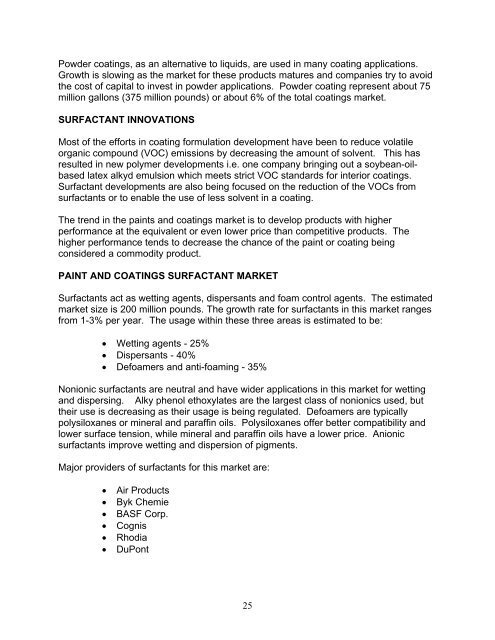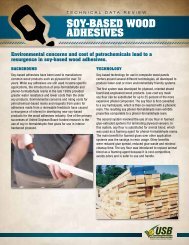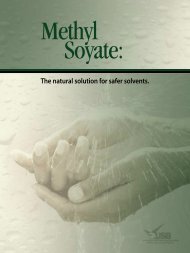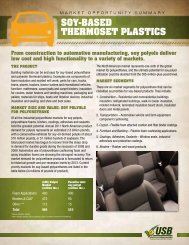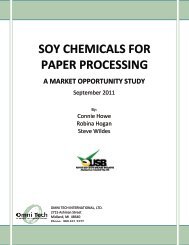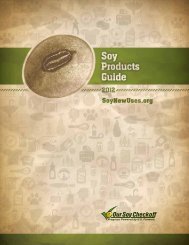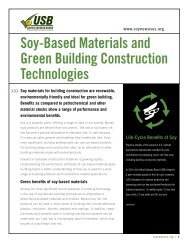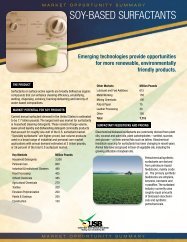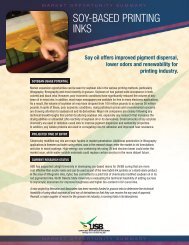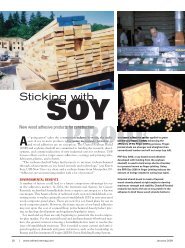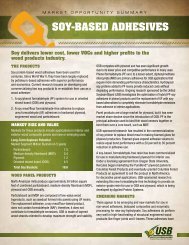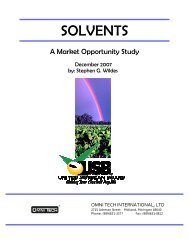Surfactants Market Opportunity Study - January 2009 - Soy New Uses
Surfactants Market Opportunity Study - January 2009 - Soy New Uses
Surfactants Market Opportunity Study - January 2009 - Soy New Uses
You also want an ePaper? Increase the reach of your titles
YUMPU automatically turns print PDFs into web optimized ePapers that Google loves.
Powder coatings, as an alternative to liquids, are used in many coating applications.<br />
Growth is slowing as the market for these products matures and companies try to avoid<br />
the cost of capital to invest in powder applications. Powder coating represent about 75<br />
million gallons (375 million pounds) or about 6% of the total coatings market.<br />
SURFACTANT INNOVATIONS<br />
Most of the efforts in coating formulation development have been to reduce volatile<br />
organic compound (VOC) emissions by decreasing the amount of solvent. This has<br />
resulted in new polymer developments i.e. one company bringing out a soybean-oilbased<br />
latex alkyd emulsion which meets strict VOC standards for interior coatings.<br />
Surfactant developments are also being focused on the reduction of the VOCs from<br />
surfactants or to enable the use of less solvent in a coating.<br />
The trend in the paints and coatings market is to develop products with higher<br />
performance at the equivalent or even lower price than competitive products. The<br />
higher performance tends to decrease the chance of the paint or coating being<br />
considered a commodity product.<br />
PAINT AND COATINGS SURFACTANT MARKET<br />
<strong>Surfactants</strong> act as wetting agents, dispersants and foam control agents. The estimated<br />
market size is 200 million pounds. The growth rate for surfactants in this market ranges<br />
from 1-3% per year. The usage within these three areas is estimated to be:<br />
• Wetting agents - 25%<br />
• Dispersants - 40%<br />
• Defoamers and anti-foaming - 35%<br />
Nonionic surfactants are neutral and have wider applications in this market for wetting<br />
and dispersing. Alky phenol ethoxylates are the largest class of nonionics used, but<br />
their use is decreasing as their usage is being regulated. Defoamers are typically<br />
polysiloxanes or mineral and paraffin oils. Polysiloxanes offer better compatibility and<br />
lower surface tension, while mineral and paraffin oils have a lower price. Anionic<br />
surfactants improve wetting and dispersion of pigments.<br />
Major providers of surfactants for this market are:<br />
• Air Products<br />
• Byk Chemie<br />
• BASF Corp.<br />
• Cognis<br />
• Rhodia<br />
• DuPont<br />
25


